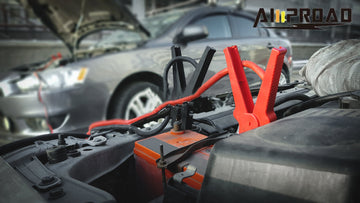
Portable car jump starters have become a lifesaver for many drivers, they are offering a quick and convenient way to get your car back up and running. However, if you're new to using jump starters, you might have a few questions. This FAQ collection addresses everything you need to know, from choosing the right jump starter to using it safely and effectively.
How to choose a portable battery jump starter?
When choosing a portable battery jump starter, the first thing you'll want to consider is what you're planning on using it for. Most car battery jump starters and battery chargers offer some flexibility, but some portable car vehicle booster pack options are more limited in what you can do with them. If you're not worried about running a small television when the power fails, you probably shouldn't worry about getting a portable car battery with a built-in AC inverter, so make sure the battery pack features have enough power and are right for your needs.
Does total storage capacity matter in portable jump starters?
Usually measured in amp hours or milliamp hours (1,000 mAh equals 1 Ah), total storage capacity matters more if you plan to use your portable jump starter battery and portable car battery charger as a backup or mobile power source. A higher number means more electrical storage capacity. Typical portable batteries are rated from five to 22 amp hours.
How many amps should a portable jump starter have?
Many portable jump starters indicate the starting amps. This is particularly important if you plan to use your portable battery primarily for its original purpose: jump starting engines. A big V8 engine -- particularly a diesel engine -- could require upwards of 500 ampere current to turnover a dead battery on a cold day. If that's what you need to do, you'll have a harder time doing it with a battery jump starter intended for a four-cylinder. Most manufacturers rate their portable car starters and motorcycle jump starter batteries for types of engines, so read the fine print for your jump starter battery. Look for starting or cranking amps, and don't worry much about the peak amps.
What about battery chemistry of portable jump starters?
The chemistry composition of portable car batteries can run the gamut, from sealed lead acid battery options to absorbent glass mat to lithium jump battery starter and, recently, ultracapacitors. The chemistry matters less for ultimate utility and more for weight, size and, to a lesser extent, cost. If you want something you can keep in your glove box, it's probably not going to be a sealed lead-acid battery booster.
What other portable jump starter features do I need to look for?
Many portable jump starters come with additional features, but the issue is size and weight. Add all of the features in one unit and the jump starter gets much bulkier, with weight exceeding 30 pounds. For some purposes -- camping trips for example -- that may not matter much. On the other hand, you may not want to be carrying one of the bigger portable car batteries around in your Mazda Miata. Some manufacturers, including the highly rated Antigravity brand, are starting to offer separate accessories like a small, powerful air compressor that work with their paperback-size lithium-polymer jump starter batteries, but this approach tends to add to the cost.
What is the proper way to jump start my car with a portable jump starter?
Here's a step-by-step guide for how to boost a car with a portable car jump starter:
- Connect the red positive (+) clamp from the jump starter to the positive (+) terminal on your car battery.
- Connect the black negative (-) clamp from the jump starter to a solid metal grounding point away from the battery on your car's chassis (e.g., a bolt or bracket). Never connect the negative clamp directly to the negative terminal on the battery.
- Start the jump starter (if your model requires it).
- Try starting your car. If it doesn't start immediately, wait a few minutes before trying again. Cranking for too long can strain the starter motor.
- Once your car starts, disconnect the clamps in the reverse order: black (-) clamp from the car first, then red (+) clamp from the car, and finally, both clamps from the jump starter.
How do I take care of my portable jump starter?
Taking care of your jump starter will ensure it's ready when you need it most:
- Charge it regularly: Even if not in use, recharge your jump starter every few months to maintain battery health.
- Store it properly: Keep the booster batterie in a cool, dry place away from direct sunlight and extreme temperatures.
- Clean the terminals: Occasionally clean the jump starter clamps with a wire brush to remove any corrosion that might hinder proper connection.
Generally speaking, portable jump starters are a valuable tool for any driver. By understanding how to choose the right one, use it safely, and maintain it properly, you can ensure a reliable and quick solution for a dead car battery. Remember, safety is always paramount, so prioritize reading your jump starter's manual and following the recommended procedures. With this knowledge in your toolbelt, you can face a dead car battery with confidence and get back on the road in no time.


